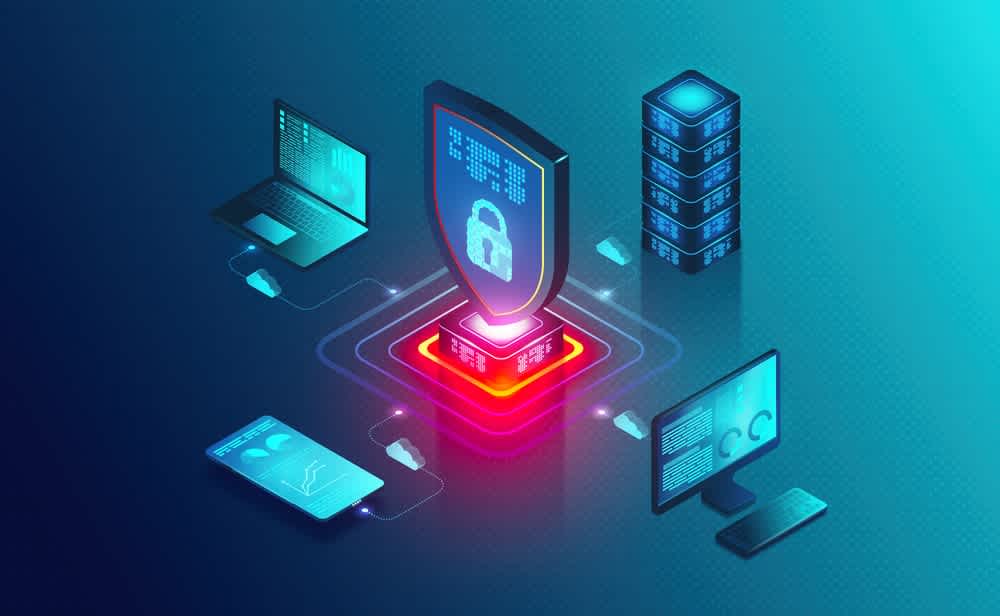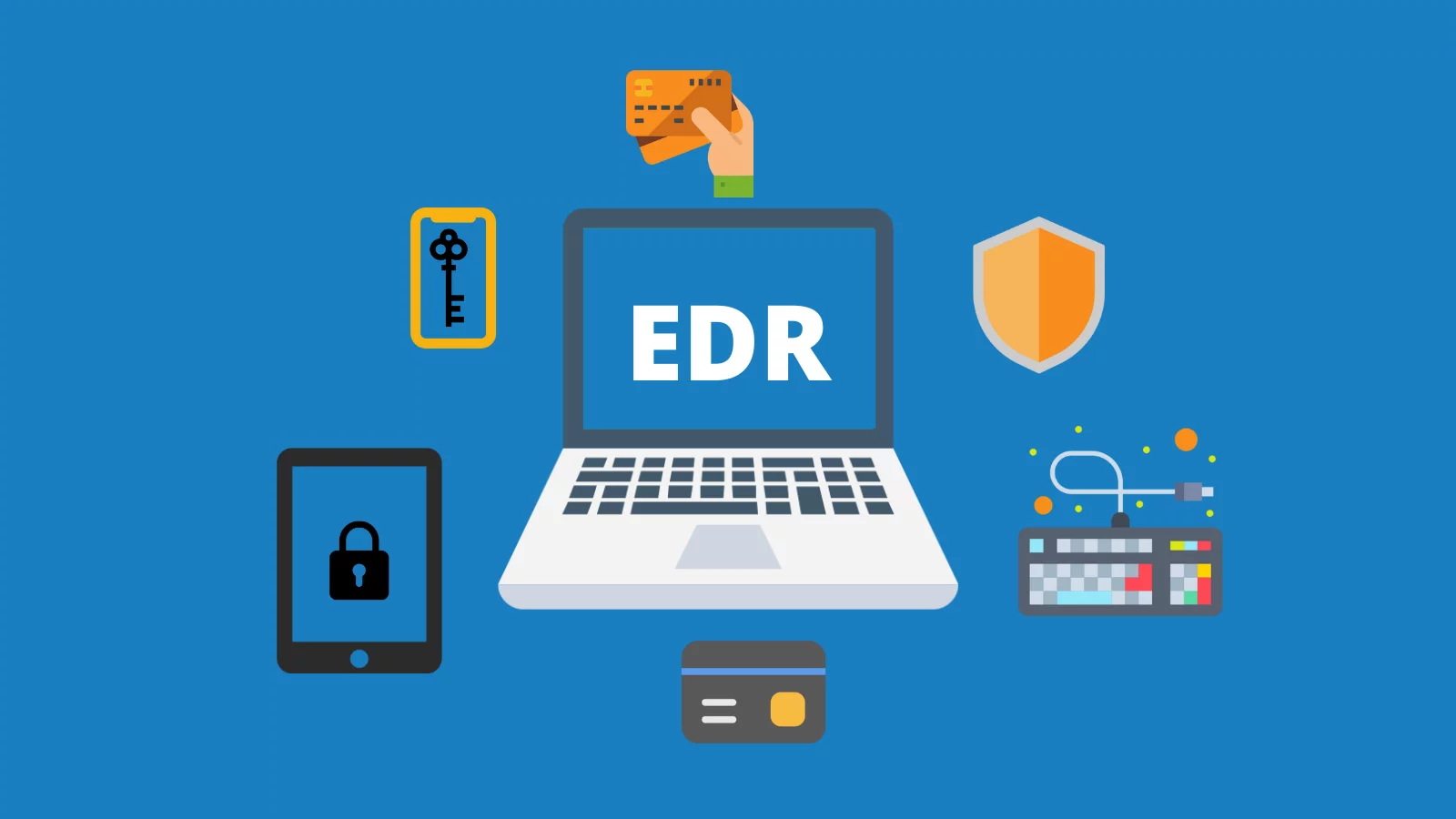It’s no secret that as technology advances, cyberattack sophistication evolves, creating a crucial challenge for businesses to defend their threat landscape. Adopting traditional measures is no longer sufficient for detecting contemporary breach attempts. To overcome this security, organisations of all sizes must use a more comprehensive and proactive endpoint detection and response EDR security approach in addition to endpoint security software.
This article will help you understand why endpoint detection and response is an important part of your overall security strategy by showing you where it fits in a good security plan.
This guide will give information on the following topics:
What Exactly Is an EDR Security?

EDR (endpoint detection and response) is a layered endpoint security system that combines real-time continuous monitoring and data collection from endpoint activity with rule-based automated reaction and analysis approaches. This thorough method tries to find possible cyber security threats, get rid of or control events, do more research, and give repair instructions to fix systems that have been damaged.
Anton Chuvakin of Gartner invented the phrase in July 2013. Chuvakin says that endpoint threat detection and response technologies are mostly about finding and analysing suspicious actions (and signs of them) on hosts or endpoints.
EDR aids in:
- Continuous file analysis can detect risks infiltrating your security system by analysing each file’s interactions with endpoints.
- By separating potentially affected servers from neighbouring network activity and limiting penetration, you can contain harmful files and prevent threats from propagating further.
- Investigate threat behaviour to find weaknesses and use the data to combat future threats.
- Eliminate threats by collecting data that can be used and following a plan to return systems to their clean state when they were first set up.
General Function
Every endpoint device that connects to a company’s network creates a permeable security perimeter, making it vulnerable to data breaches and malicious assaults. Malware that doesn’t need to be downloaded, malware that can change into different forms, phishing, advanced persistent attacks, and malicious code hidden in HTTPS traffic can easily get past the security perimeter and give hackers access to important assets.
Furthermore, the COVID-19 epidemic has resulted in a massive migration of company data and operations to internet infrastructure and remote working, raising security risks and loopholes. As a result of this shift, the number of sophisticated assaults has increased exponentially. According to a Verizon analysis, ransomware assaults have increased by 13%. This increase is larger than the previous five years combined.
Ransomware attacks have emerged as one of the most significant security issues confronting enterprises globally. Cybercriminals steal sensitive data and hold it hostage in exchange for bitcoin or equivalent recompense. Businesses risk not just losing data but also having it shared with the public.
These difficulties necessitate a comprehensive security approach, which is where EDR solutions may assist. They give endpoints the granular visibility and control they need to be safe before and after infection by using automated analysis and responses.
Important Elements
Threat Detection and Endpoint Data Collection
Monitoring and collecting endpoint and network event data such as connections, processes, activity volume, and data transfers is the initial stage in implementing an EDR security solution. Software agents that watch over host systems write down these events in a central database.
This procedure aids EDR in its core function of threat detection. With the aid of cyber threat intelligence, you can identify attacks that alter their features regularly.
Containment and Response Automation
It employs behavioural analytics to assess several occurrences reported by various users in real time and automatically discover indications of suspicious activity. Pre-configured rules produce automatic actions on detecting a security breach and triggering an instant response, such as sending notifications or logging the end user off through continuous file inspection. EDR also helps to contain the threat and stop it from spreading to other systems and infecting them.
Data analysis and threat detection in
The approach also incorporates real-time analytics for speedy detection of threats that do not match pre-configured rules. Analytics engines use algorithms to seek patterns in massive amounts of data by analysing and correlating it. If a confirmed threat affects an endpoint, users will be given the next measures to take. False positives result in threat cancellation, and the information is saved for future use.
Forensic tools are used to detect threats and analyse attacks. IT experts can check an endpoint for threats like malware or other vulnerabilities that haven’t been found yet. They can also look at breaches to learn more about how they work.
Elimination of the Threat
Finally, EDR develops a plan of action to reduce threats. Before implementing the eradication method, various concerns must be addressed, including determining the nature and origin of the danger, designating impacted systems, and verifying that the threat has not duplicated itself. Endpoint-specific telemetry can be collected to learn more about how the threat is acting and help get rid of it.
Every EDR security product works differently, but they all have the same goal: to proactively monitor, analyze, identify, detect, and block advanced threats.
Fundamental Competencies
Visibility is provided throughout the IT environment.
The most important function that EDR provides is complete endpoint visibility, making it a critical component of any security system. It allows for continuous endpoint monitoring, whether online or offline. Continuous monitoring delivers complete insights into all endpoints via a centralised management panel, allowing suspicious activity to be identified and stopped before it becomes a breach.
Data Gathering in Order to Create a Threat Repository
A team of security professionals gathers large volumes of data from endpoints, which is then contextualised. Using technologies such as advanced analytics, artificial intelligence, or machine learning, this data may be used to resolve any abnormalities. The information is also saved in a database so that it can be used in the future for research and to look for signs of future attacks.

Behavioral Security
By looking for signs of attack, EDR employs behavioural techniques to guard against developing unknown threats, zero-day assaults, and insider threats (IOAs). This capability detects lateral movement across networks and resources, making it superior to traditional signature-based detection approaches or indications of compromise (IOC) methods, which can result in quiet failures and data breaches.
Allow for Real-Time Responses
An accurate and timely reaction to a possible attack might keep it from compromising your security system. EDR systems’ real-time reaction functionality can thwart an attack in its early phases by instantly executing an action to confine or neutralise the threat. Rapid incident response lets you lessen the effects of cyberattacks and protect your company from full-blown breaches.
The Application of Whitelists and Blacklists
EDR security solutions provide whitelisting and blacklisting functions, allowing certain programmes to operate on a system or blocking questionable domains, URLs, and IP addresses. These solutions serve as the initial line of defence to protect networks against hackers’ known methods of operation.
Primary Advantages
Detection of Endpoint Threats
EDR is intended to identify the methods, techniques, and processes that attackers employ to breach your security perimeter. It collects data on how attackers enter a network and their course of activity. The correct EDR technologies safeguard you against unusual user behaviours and behaviours, sophisticated malware, fileless assaults, and the unauthorised usage of lawful programmes.
It is more cost-effective and time-efficient.
These solutions handle risks as soon as they penetrate an organization’s perimeter, preventing interruptions, productivity losses, and financial losses. They eliminate human intervention by automating detection, path analysis, and lateral movement phases. In the early phases of automation, there are fewer false alarms and false positives, so security analysts may have more time to look into real risks.
Integration of Other Security Tools
Some modern EDR systems can work in tandem with several security solutions to provide a comprehensive data security approach. These integrations let a third-party anti-virus tool automatically respond to threats and get rid of any malware that is found, so the user doesn’t have to wait as long to do important things.
In conjunction with Threat Intelligence
Many EDR companies include threat intelligence subscriptions in their endpoint security solutions to improve their capacity to detect new vulnerabilities such as zero-day and multi-layered assaults. Cyber threat intelligence uses AI and threat databases to collect data on historical and current assaults, evaluate them, and use them to detect threats targeting your endpoints.
Trends
Integration of Artificial Intelligence and Machine Learning
One of the most essential components of EDR security systems is threat investigation. EDR can use machine learning and artificial intelligence to deliver automated investigative services.
AI enables you to track and understand the organization’s baseline threat behaviour, which you can then use to evaluate occurrences. Machine learning aids in the efficient identification of threats and attack classes.
Use of the MITRE ATT&CK Framework
The Adversarial Tactics, Techniques, and Common Knowledge (ATT&CK) database was created using threat information, real-world observations, and event reporting. It aids in the classification of threats based on system vulnerabilities, malicious software programmes, and infiltration strategies.
ATT&CK’s opponent tactics, methods, and procedures (TTP) system for threat analysis have made it well-known across the world.
Increased Adoption of BYOD Policies and IoT Devices.
In recent years, there has been a paradigm shift in company data, procedures, and infrastructure toward cloud computing. Poorly protected and incorrectly configured cloud resources might serve as an entry point for attack vectors. The use of the cloud, the fast growth of mobile technology, BYOD (bring your own device) policies, and the more flexible use of IoT devices have all led to a huge rise in cyber risks around the world.
This significant shift has made enterprises more likely to employ decentralised, edge-based security technologies, resulting in a large need for endpoint detection and response solutions. According to Mordor Intelligence, the EDR market is expected to grow from USD $1.81 billion in 2020 to USD $6.90 billion by 2026, at a CAGR of 25.6% between 2021 and 2026. This growth is happening because organisations are becoming more mobile, endpoint threats are getting worse, and digital security risks need to be cut down.
EDR versus EPP
Both EDR and EPP (endpoint protection platforms) defend endpoints from attacks, although for different reasons. EPP serves as the initial line of protection, primarily safeguarding your endpoints from known and new malware assaults. At the same time, EDR acts as a second layer of protection, helping to find and stop threats that get past EPP or other security platforms.
These technologies can be employed alone as stand-alone solutions or together to provide a unified response to complex cyber threats. Many suppliers offer a mix of EPP and EDR features to protect your digital perimeter from cyber attacks and security problems that are always changing.
Last Thoughts
A suitable security system can safeguard your business from sophisticated cyber threats. Buyers may select from a wide range of EDR security solutions on the market, each with its own set of tools and capabilities. To maintain the right level of security, you must first look at your business’s goals and needs before buying a system.
Keeping all these factors in mind, make sure you select the correct provider so that your company’s security and precious assets are not jeopardised. If you’re looking for different endpoint security software, check out our free comparison guide of some of the most popular security solutions.










Add Comment